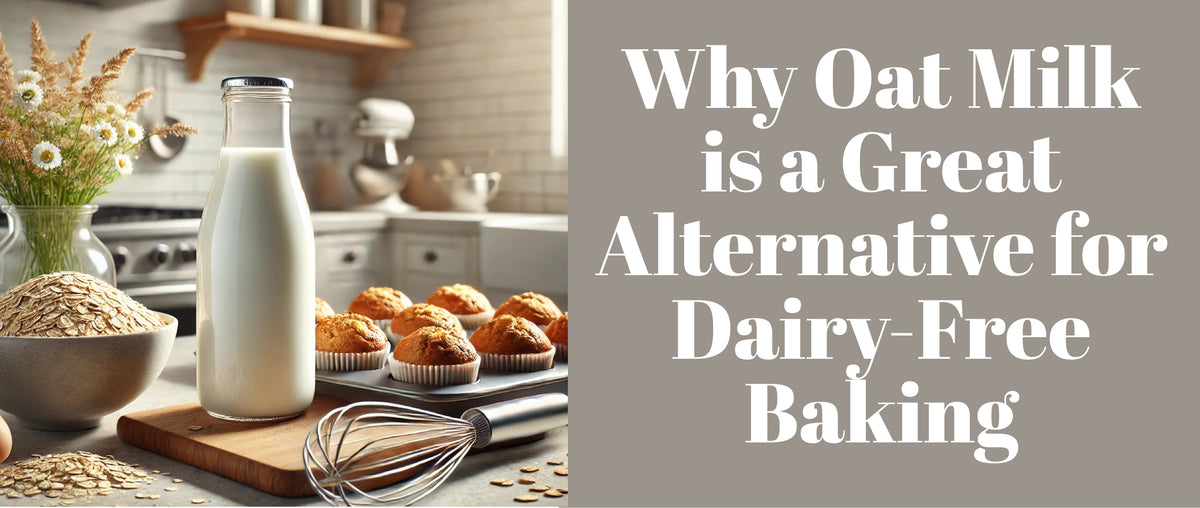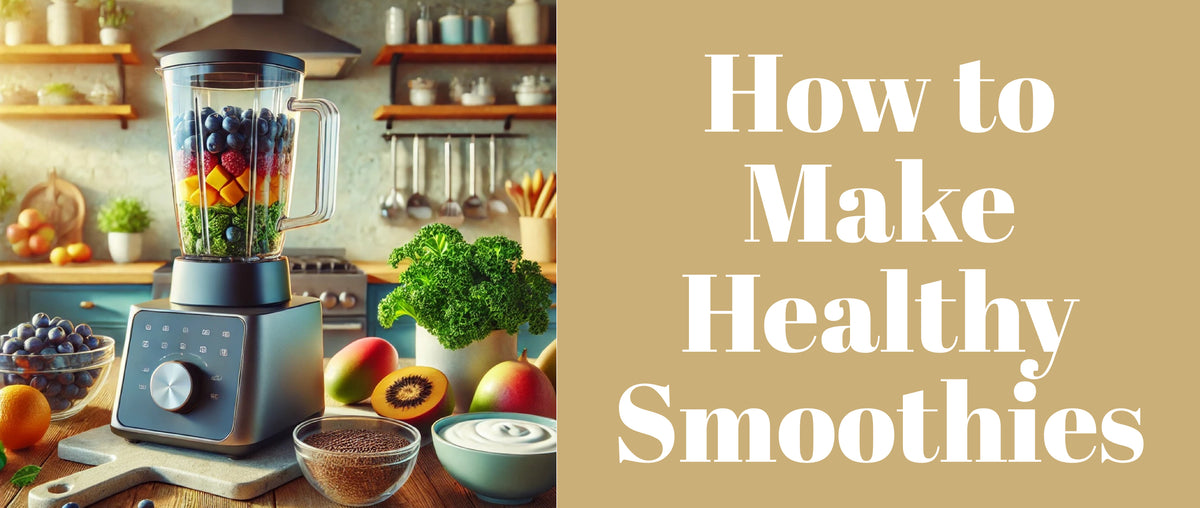Why Oat Milk is a Great Alternative for Dairy-Free Baking
The demand for dairy-free and Vegan products has grown rapidly as more people adopt a healthy lifestyle or follow plant-based diets. From lactose intolerance to ethical choices, people are increasingly looking for delicious, versatile dairy-free alternatives. Among these, Oat Milk has become one of the most popular options for everything from smoothies to baked goods. With its creamy texture and subtle, natural sweetness, oat milk stands out as an ideal substitute, especially in recipes requiring a dairy-like consistency.
Baking with oat milk can yield exceptional results, especially when you’re making plant-based treats or reducing dairy. It’s also an eco-friendly choice, with lower environmental impact compared to dairy or nut-based milks. This article explores why oat milk is an excellent choice for dairy-free baking and how it compares to other alternatives. We’ll also share practical tips, health benefits, and tasty ideas to help you bake with oat milk confidently and deliciously.
What is Oat Milk?
Oat milk is a plant based milk made by blending oats with water and straining the mixture to remove any solids. This simple process creates a creamy, mildly sweet liquid that’s naturally dairy-free, making it an excellent choice for those who are lactose-intolerant, vegan, or seeking a healthy lifestyle. Compared to nut-based milks like almond or cashew, oat milk is nut-free, so it’s suitable for people with nut allergies.
Nutritional Profile of Oat Milk:
| Nutrient | Oat Milk (per 1 cup) | Dairy Milk (per 1 cup) |
|---|---|---|
| Calories | 120-130 | 150 |
| Protein | 2-3 grams | 8 grams |
| Fiber | 2 grams | 0 grams |
| Fat | 5 grams | 8 grams |
| Calcium | 25-35% DV | 30% DV |
| Cholesterol | 0 mg | 20 mg |
Key Advantages of Oat Milk:
- Creaminess: Oat milk’s texture is thicker than most plant-based milks, making it similar to dairy milk and great for achieving a rich, moist texture in baked goods.
- Natural Sweetness: Oat milk’s slight sweetness is a natural complement in both savory and sweet recipes.
- High Fiber Content: Oat milk has higher fiber than dairy milk, aiding in digestion and helping you feel full longer.
- Low Cholesterol and Fat: Compared to dairy and other alternatives, oat milk is low in saturated fat and contains no cholesterol, supporting healthy living and heart health.

Why Choose Oat Milk for Dairy-Free Baking?
Choosing the right dairy-free milk for baking can make a big difference in texture, flavor, and consistency. Oat milk stands out due to its balance of fat, protein, and natural sweetness, all of which mimic dairy milk more closely than other alternatives.
Why Oat Milk Works Well in Baking:
- Rich and Creamy Texture: The natural starches in oats create a creamier texture compared to almond or rice milk, helping oat milk create moist and tender baked goods.
- Subtle, Versatile Flavor: Oat milk has a mild flavor that won’t overpower recipes. This makes it ideal for both sweet and savory dishes, from chocolate cakes to savory Garlic Butter biscuits.
- Good Binding and Texture: Unlike fat-free butter or unsalted butter, which have lower fat content, oat milk provides the fats needed to bind and maintain texture in baking recipes.
Comparison: Oat Milk vs. Other Dairy-Free Milk Options for Baking
| Milk Type | Creaminess | Flavor Impact | Best Used For |
|---|---|---|---|
| Oat Milk | High | Neutral | Cakes, muffins, cookies |
| Almond Milk | Low | Nutty | Pancakes, quick breads |
| Soy Milk | Moderate | Slightly beany | Custards, dense cakes |
| Coconut Milk | High | Distinct | Cakes, brownies, savory bakes |
Oat milk performs exceptionally well in a variety of recipes, providing a creamy texture similar to that achieved with Unprocessed Cheese or a mozzarella cheese block. For example, oat milk can help create the desired mouthfeel and richness in brownies or cakes, making it a preferred choice for vegan bakers. It’s especially effective in recipes that require dairy milk for consistency and texture, such as vegan butter or plant based cheese bakes.
Health Benefits of Baking with Oat Milk
Baking with oat milk is not only practical; it can support a healthy lifestyle. Here are some of the main benefits:
- Low Cholesterol: Unlike dairy milk, oat milk is cholesterol-free, which is beneficial for heart health.
- Supports Digestive Health: The fiber in oat milk aids digestion and can support healthy weight loss by keeping you fuller for longer.
- Eco-Friendly Choice: Compared to dairy and almond milk, oat milk requires less water to produce, making it an environmentally conscious choice.
- Vegan and Allergy-Friendly: Since it’s made from oats, oat milk is suitable for those with nut allergies, unlike almond or cashew milk. This makes it a versatile option for bakers creating vegan cheese items or those looking for healthy smoothie recipes that are safe for all.
Whether you're baking a delicious cake or preparing a healthy weight loss recipe, oat milk can enhance flavor, texture, and nutritional value.
Comparing Oat Milk to Other Dairy-Free Milk Options for Baking
Choosing the right milk alternative for baking is essential, as each has unique characteristics that affect the texture, flavor, and consistency of the final product. While oat milk is often a top choice for bakers, comparing it with other popular options like almond milk, soy milk, and coconut milk can help identify its unique advantages.
Oat Milk vs. Almond Milk
- Texture: Almond milk is generally thinner, which can result in baked goods with a slightly drier texture. Oat milk, on the other hand, has a creamier consistency that mimics dairy milk more closely, helping to create soft, moist cakes, muffins, and breads.
- Flavor Impact: Almond milk has a distinct nutty flavor that may alter the taste of certain recipes, whereas oat milk’s mild sweetness tends to blend seamlessly without overpowering the other ingredients.
- Best Uses: Oat milk is ideal for recipes that require a richer, smoother texture, such as cakes, brownies, and even savory dishes like Garlic Butter biscuits. Almond milk, though suitable for baking, is often used in recipes that don’t rely heavily on creaminess, such as pancakes or quick breads.
Oat Milk vs. Soy Milk
- Texture and Protein Content: Soy milk is high in protein, which gives it a thicker texture compared to many plant-based milks, similar to dairy milk. However, its flavor can have a slightly beany aftertaste, which may be noticeable in light, sweet baked goods.
- Versatility: Oat milk’s flavor is more neutral, making it a better choice for diverse recipes, from cakes to custards. Soy milk is often used in recipes that benefit from its higher protein, like dense cakes or doughs.
- Best Uses: Oat milk can be used in almost any baking recipe, while soy milk might be best reserved for denser cakes, custards, and recipes requiring more binding.
Oat Milk vs. Coconut Milk
- Creaminess and Fat Content: Coconut milk is very high in fat, giving baked goods a rich, dense texture and a distinctive coconut flavor. While this is great for certain desserts, the strong flavor can overpower subtler recipes. Oat milk’s creaminess and mild taste allow it to be used in both sweet and savory recipes, creating a balanced texture without a strong aftertaste.
- Suitability: While coconut milk works well in specific items like brownies or tropical-themed desserts, oat milk is more versatile. It’s perfect for bakers looking to make recipes where a neutral flavor and moderate creaminess are preferred.
Here’s a table summarizing the key differences:
| Milk Type | Creaminess | Flavor Impact | Best Used For |
|---|---|---|---|
| Oat Milk | High | Neutral | Cakes, muffins, brownies, savory bakes |
| Almond Milk | Low | Nutty | Pancakes, quick breads |
| Soy Milk | Moderate | Beany | Custards, dense cakes, binding-rich recipes |
| Coconut Milk | High | Coconut | Brownies, tropical desserts, dense bakes |
Tips for Baking with Oat Milk
If you’re ready to start baking with oat milk, a few key tips can ensure your recipes turn out just right. Oat milk’s unique properties, such as its creaminess and slight sweetness, mean you can use it as a 1:1 substitute for dairy milk in most recipes, but a few adjustments can help you achieve even better results.
Key Considerations When Using Oat Milk
- Adjust for Sweetness: Oat milk has a natural sweetness, which can complement baked goods but may require adjustments in recipes with significant amounts of sugar. For example, if a cake recipe calls for 1 cup of dairy milk, using 1 cup of oat milk and reducing the sugar slightly can help balance the sweetness.
- Choose Unsweetened Varieties: Opt for unsweetened oat milk to control the flavor in both sweet and savory recipes. This is especially helpful for savory baked goods, like breads or muffins with herbs and spices.
- Use Store-Bought for Consistency: Homemade oat milk is easy to make, but it may have a thinner consistency than commercial versions. Store-bought oat milk, such as Grabenord's plant-based oat milk, is designed to have the right balance of creaminess, making it more reliable in baking.
Specific Tips for Baking Different Types of Goods with Oat Milk
- Cakes and Muffins: Use oat milk in equal proportions to dairy milk for a light, fluffy texture.
- Cookies and Brownies: Adding a bit of extra oat milk can enhance the softness of cookies and add a rich, gooey texture to brownies.
- Bread and Rolls: Oat milk can work well in bread doughs, providing the moisture needed for a good rise. For an extra flavor boost, try pairing oat milk with Cashew butter or vegan butter in your dough recipes.

Sample Recipe: Vegan Chocolate Chip Cookies with Oat Milk
A great way to experience the versatility of oat milk in baking is by trying it in a classic cookie recipe. Here’s a quick vegan chocolate chip cookie recipe where oat milk adds extra moisture and flavor:
Ingredients:
- 1 ¼ cups all-purpose flour
- ½ tsp baking soda
- ¼ tsp salt
- ½ cup vegan butter or unsalted butter
- ½ cup brown sugar
- ¼ cup white sugar
- ¼ cup oat milk
- 1 tsp vanilla extract
- 1 cup chocolate chips
Instructions:
- Preheat oven to 350°F (175°C). Line a baking sheet with parchment paper.
- In a bowl, whisk together flour, baking soda, and salt.
- In a separate bowl, cream together vegan butter, brown sugar, and white sugar until smooth. Add oat milk and vanilla extract, and mix until combined.
- Gradually add the dry ingredients to the wet ingredients, mixing until just combined. Fold in chocolate chips.
- Scoop dough onto the baking sheet, leaving space between each cookie.
- Bake for 10-12 minutes or until edges are golden. Let cool and enjoy!
Using oat milk in these cookies gives them a soft, chewy texture, similar to recipes that call for best mozzarella cheese for pizza or Unsalted Butter for added richness.
Conclusion
Incorporating oat milk into your baking not only enhances the texture and flavor of your treats but also provides numerous health and environmental benefits. With its creamy texture, subtle sweetness, and nutritional profile, oat milk stands out as an ideal dairy-free alternative for a variety of baked goods. Whether you’re making cakes, cookies, muffins, or savory bakes, oat milk provides the richness and consistency you need without overpowering other flavors.
When compared to other plant-based milks like almond, soy, and coconut milk, oat milk offers a unique balance of creaminess, versatility, and health benefits. It’s also a more sustainable choice, requiring fewer resources to produce than dairy or nut-based milks.
By choosing oat milk for your baking, you can create delicious, healthy, and eco-friendly treats that cater to a variety of dietary needs, from vegan to lactose-intolerant diets. Whether you're looking to make healthy smoothie recipes, plant-based desserts, or savory baked goods, oat milk is a fantastic choice to enhance your baking experience.
Do you enjoy vegan food? We have a list of vegan restaurants in India to help you find delicious options in your area!










